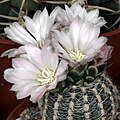
Parodia is a genus of flowering plants in the family Cactaceae, native to the eastern slopes of the Andes in northwestern Argentina and southwestern Bolivia and in the lowland pampas regions of northeastern Argentina, southern Brazil, eastern Paraguay, and Uruguay. This genus has about 65 species, many of which have been transferred from Eriocactus, Notocactus and Wigginsia. They range from small globose plants to 1 m (3 ft) tall columnar cacti. All are deeply ribbed and spiny, with single flowers at or near the crown. Some species produce offsets at the base. They are popular in cultivation, but must be grown indoors where temperatures fall below 10 °C (50 °F).

Soehrensia schickendantzii is a cactus found in northwestern Argentina in provinces of Salta and Tucumán at elevations of 1600 to 3200 meters.

Gymnocalycium baldianum, the spider-cactus or dwarf chin cactus, is a species of flowering plant in the cactus family Cactaceae, native to the Catamarca Province in Argentina.

Soehrensia thelegona is a species of cactus in the Soehrensia genus.

Cereus aethiops is a species of cactus found from Uruguay to Argentina.
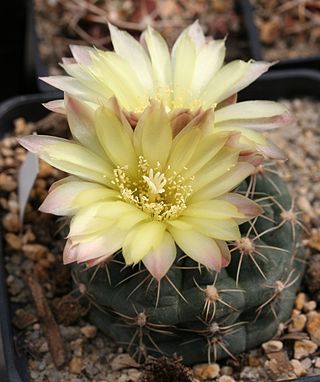
Gymnocalycium andreae is a species of Gymnocalycium from Argentina.
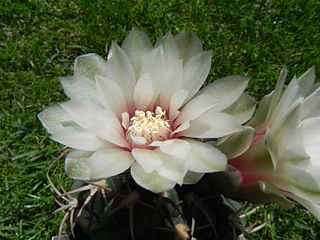
Gymnocalycium bayrianum is a species of Gymnocalycium from Argentina.

Acanthocalycium thionanthum is a species of Acanthocalycium from Argentina.

Oreocereus trollii, commonly known as the Old Man of the Andes cactus, is a species of cacti native to Argentina and Bolivia. Though listed as Least Concern by the IUCN, the plant is collected extensively, and in some areas is threatened.

Soehrensia formosa, is a species of Echinopsis found in South America. In north-western Argentina, Bolivia and northern Chile. First published in Cactac.: Handb. Kakteenk. 3: 1678 in 1959.

Soehrensia huascha, is a species of Soehrensia in the Cactaceae family, found in north western Argentina. First published in Cactaceae Syst. Init. 29: 5 in 2013.

Echinopsis tacaquirensis, is a species of Echinopsis found in Bolivia.

Echinopsis strigosa, is a species of Soehrensia in the cactus family. It is native to north western Argentina. It was first published in Cactaceae Syst. Init. 28: 31 in 2012.
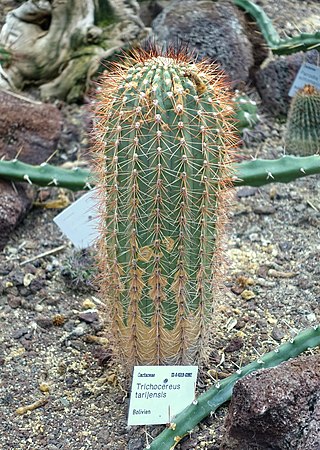
Soehrensia tarijensis, is a species of Soehrensia, in the cactus family. It is native to Bolivia and northwestern Argentina.

Melocactus bahiensis is a species of Melocactus found in Bahia, Brazil.
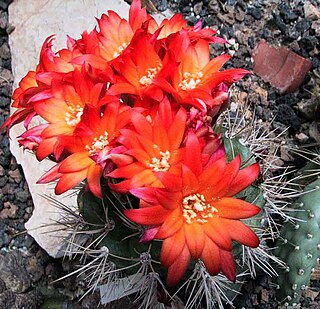
Matucana oreodoxa is a species of Matucana found in Peru.

Leucostele deserticola is a species of cactus native to South America

Oroya peruviana is a species of cacti, originating from Peru
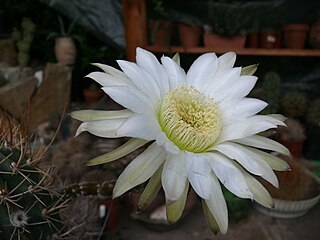
Acanthocalycium leucanthum is a species of flowering plant in the cactus family Cactaceae from Argentina.
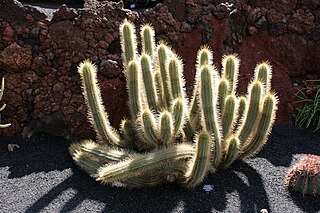
Soehrensia thelegonoides is a species of Soehrensia found in Argentina.


